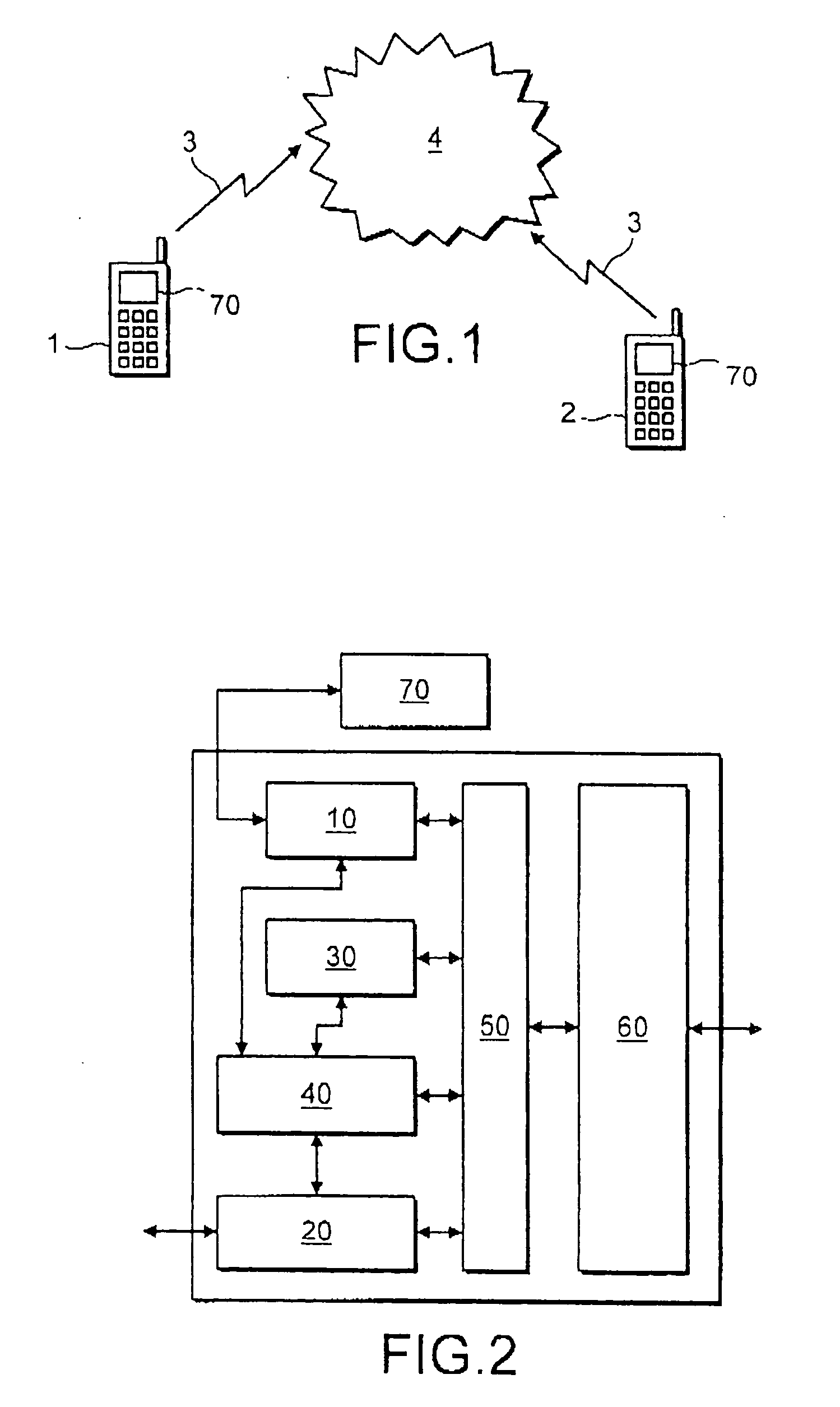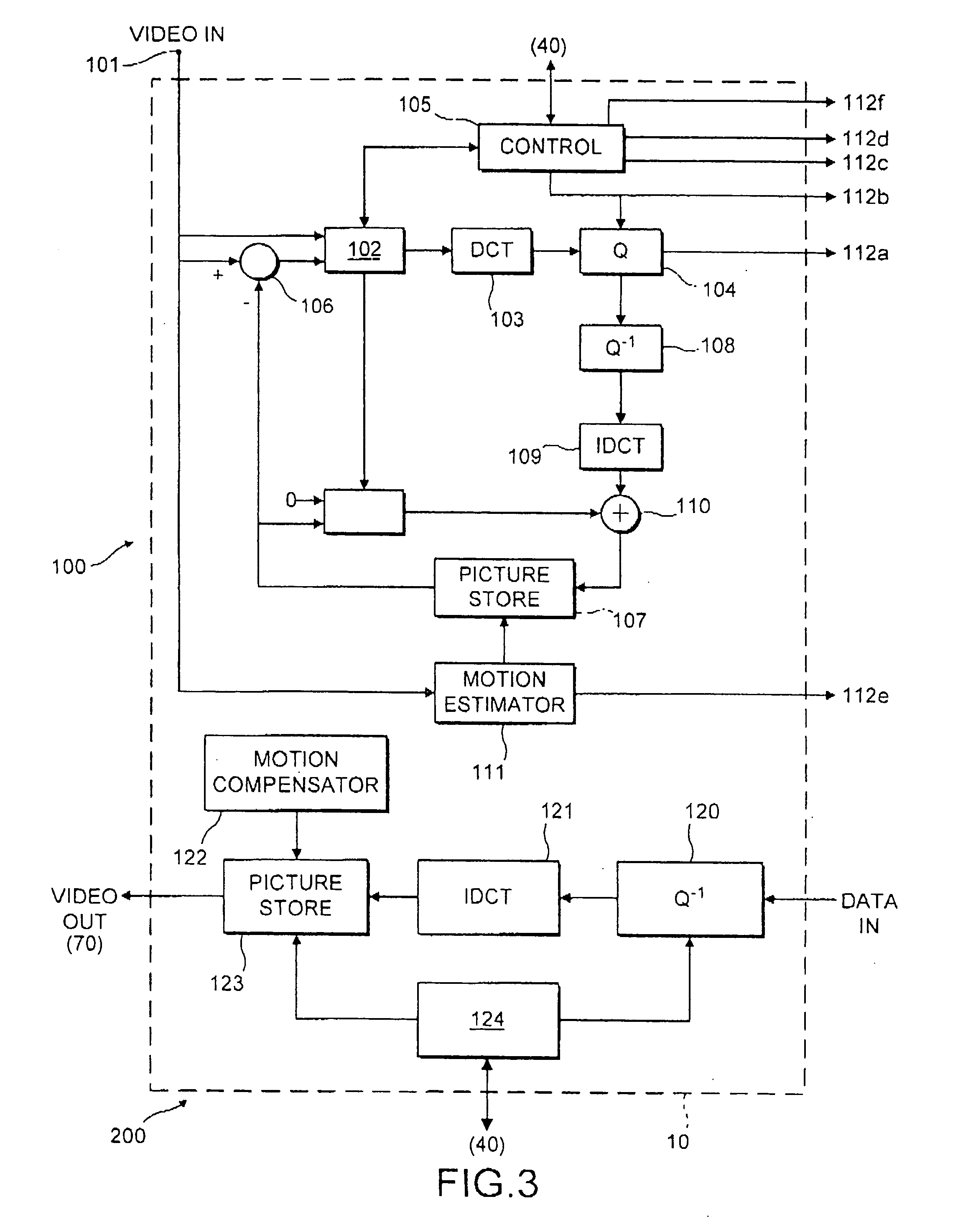Video Coding
a video and coding technology, applied in the field of video coding, can solve the problems of inability to reliably know how many gobs or entire pictures were lost by receivers
- Summary
- Abstract
- Description
- Claims
- Application Information
AI Technical Summary
Benefits of technology
Problems solved by technology
Method used
Image
Examples
first embodiment
[0055] In the invention, each time the encoder encodes a frame which may form the reference frame for a subsequent frame, the encoding control manager 105 associates with the frame a so-called Reference Picture Order Number (RPON). For example, a RPON is associated with every I or P frame of a video signal but not with a B-frame. The RPON value is incremented each time a successive reference picture is encoded, preferably by 1.
[0056] The encoding control manager 105 outputs the RPON codeword on output 112f which indicates the Reference Picture Order Number associated with the encoded frame. This is multiplexed into the video bitstream by a multiplexer.
[0057]FIG. 4 illustrates the operation of the encoder. In this embodiment, the encoder is arranged to output an I-frame when the similarity between the frame being coded and the reference frame is less than a first threshold i.e. when the output from the subtractor 106 is greater than a first threshold. Otherwise the encoder outputs P...
second embodiment
[0061]FIG. 5 shows an encoder according to the invention. In this embodiment, the encoder is arranged to code the frames according to the regular sequence I B B P B B P B B P B B P B B I B B P. The first line of FIG. 5 shows the input frames and the second line shows the coded frames and their coding mode, I, P or B.
[0062] The frames are received from a video capture device in the order 1, 2, 3, 4, 5, 6 etc. and are displayed in this order i.e. the decoded frames are displayed in the order I1, B2, B3, P4, B5, B6, P7 etc. However the video bit stream is compressed, transmitted and decoded in the following order I1, P4, B2, B3, P7, B5, B6 etc. This is because each B-frame requires preceding and succeeding reference frames before they can be encoded / decoded i.e. frame B2 requires frame I1 and P4 to be encoded / decoded before frame B2 can be encoded / decoded.
[0063] As explained previously, B-frames are inserted between anchor picture pairs of I- and / or P-frames and are predicted from eit...
PUM
 Login to View More
Login to View More Abstract
Description
Claims
Application Information
 Login to View More
Login to View More - R&D
- Intellectual Property
- Life Sciences
- Materials
- Tech Scout
- Unparalleled Data Quality
- Higher Quality Content
- 60% Fewer Hallucinations
Browse by: Latest US Patents, China's latest patents, Technical Efficacy Thesaurus, Application Domain, Technology Topic, Popular Technical Reports.
© 2025 PatSnap. All rights reserved.Legal|Privacy policy|Modern Slavery Act Transparency Statement|Sitemap|About US| Contact US: help@patsnap.com



